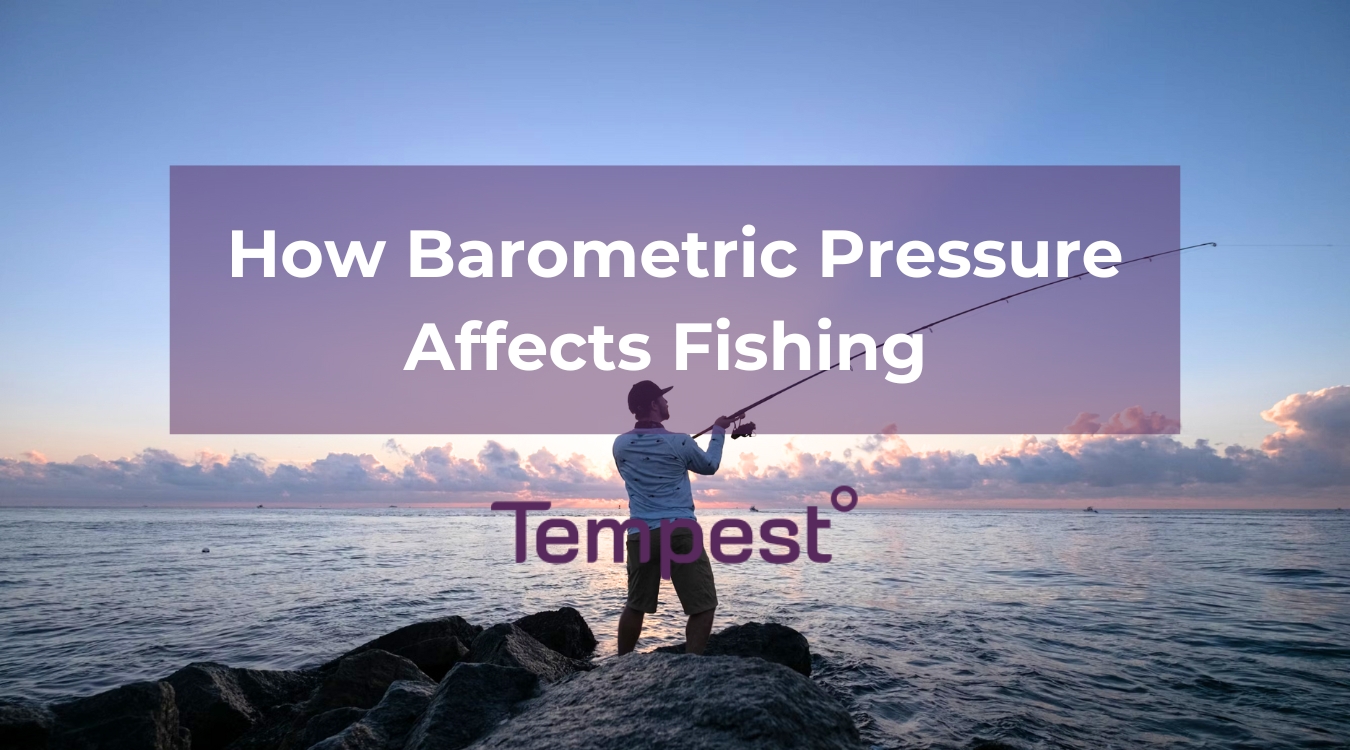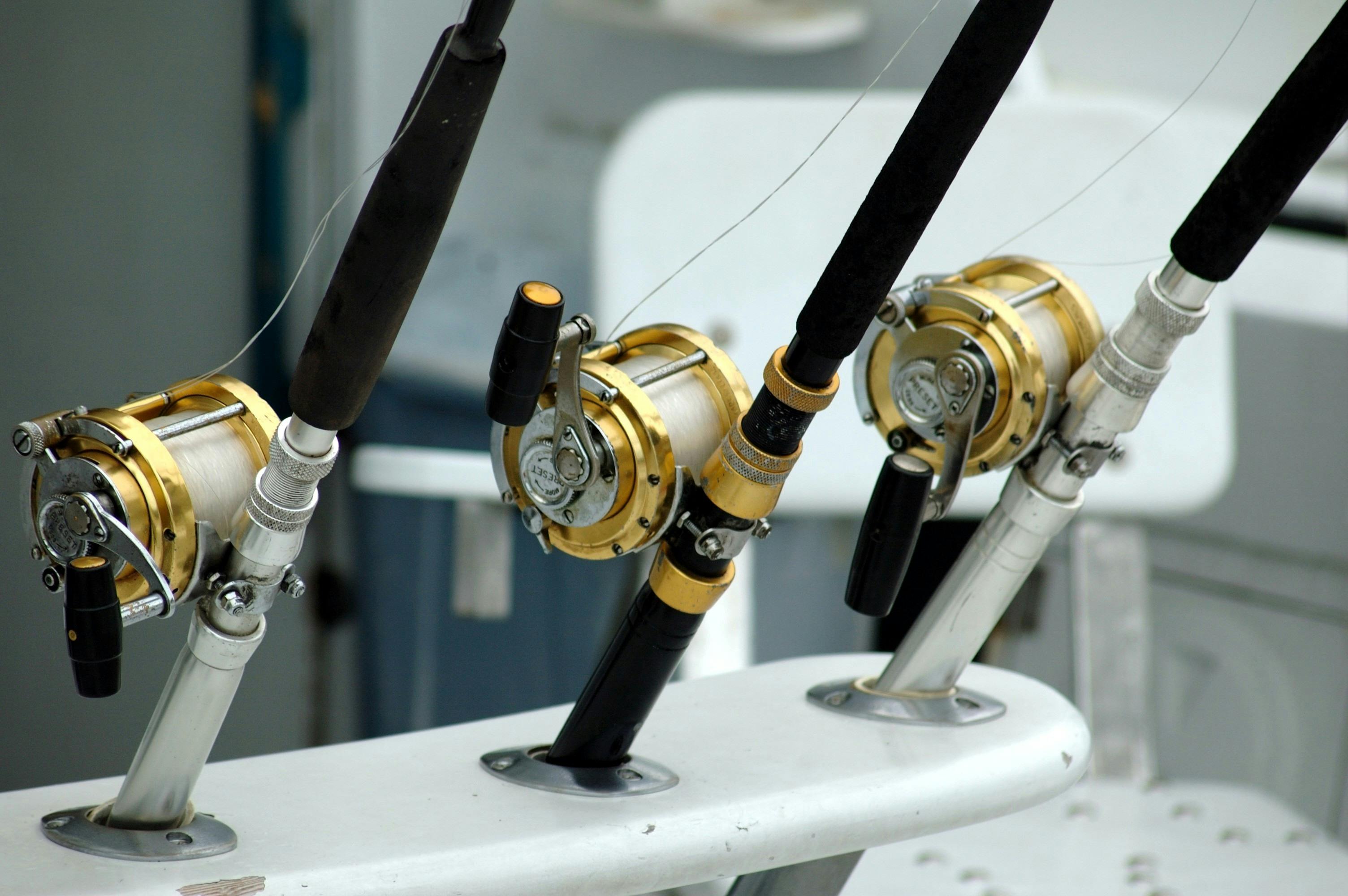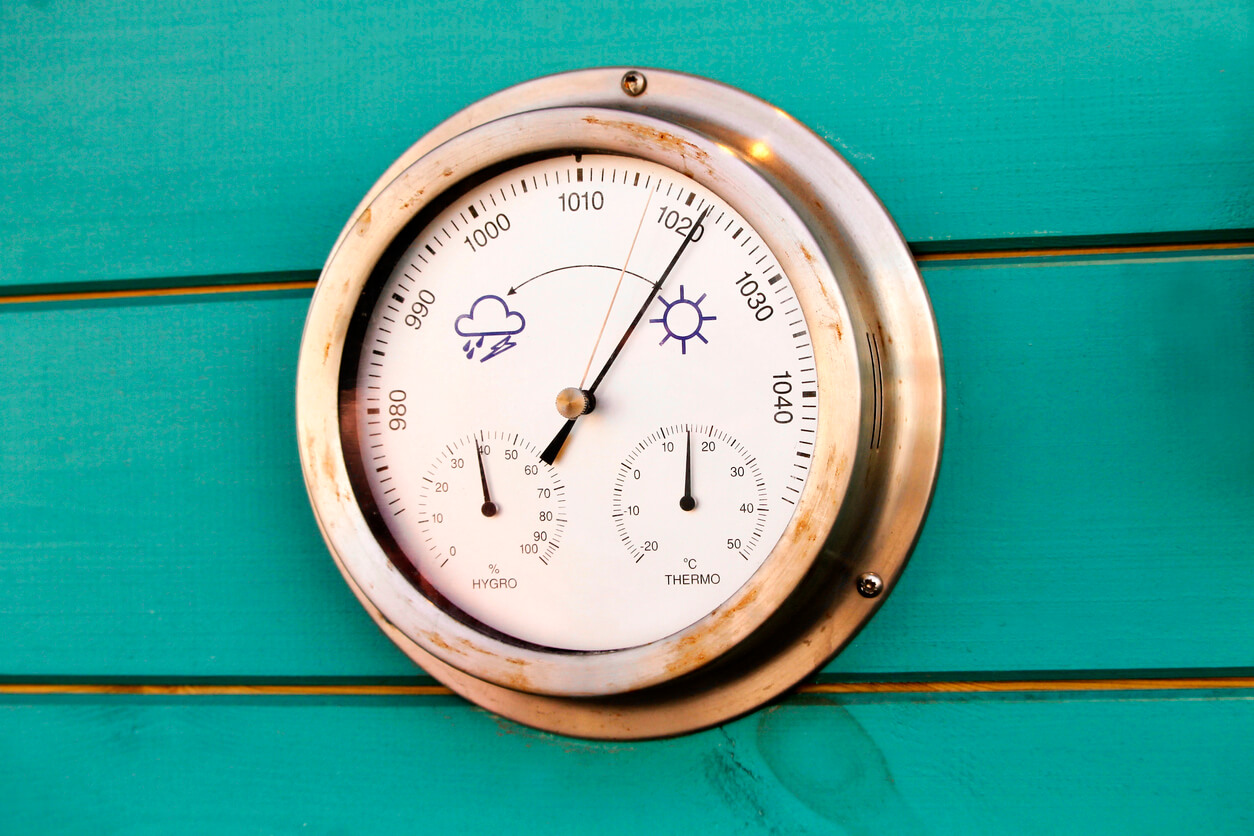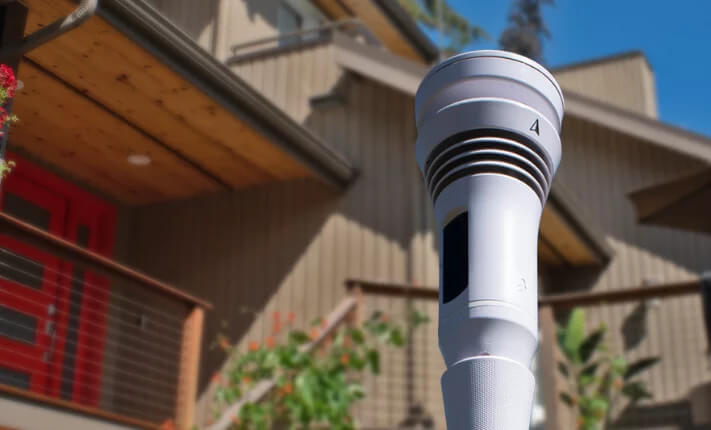
Are you an avid angler who wants to know the science behind how the weather affects fishing patterns? If so, you need to know the best barometric pressure for fishing so you can plan your trips accordingly.
The relationship between fishing and barometric pressure changes can help explain why you might be in a fishing frenzy one day while the next day is completely dry – even when you’re fishing in the same area. So, how does the barometric pressure affect fishing? Continue reading below as we discuss what good barometric pressure is for fishing and how to measure it accurately.
- How Does Barometric Pressure Affect Fishing?
- What Barometric Pressure Is Good For Fishing?
- How To Measure The Best Barometric Pressure For Fishing
The Tempest Weather System offers accurate and real-time forecast data to help you track when there’s a good barometric pressure for fishing.

How Does Barometric Pressure Affect Fishing?
Barometric pressure is the weight of the atmosphere in a specific area, usually measured in millibars (mb) and inches of Mercury (inHg). A number of factors can influence the barometric pressure in a given area, including altitude, wind patterns, and temperature.
While humans are more or less accustomed to changes in air pressure, experts believe fish’s unique anatomy explains why their behaviors are strongly influenced by such changes. Specifically, fish have a swim bladder that is filled with air and helps them maintain buoyancy. By nature, this bladder is sensitive to even slight changes in pressure, which can cause discomfort for the fish and affect their behavioral patterns.
In other words, when there’s low barometric pressure and less pressure on a fish’s body, the bladder expands. Fish may swim deeper where the water pressure is higher as a way to adjust, becoming less interested in feeding until conditions normalize.
Fishing activity is similar in high-pressure conditions. Some theorize that the higher pressure causes the fish to become lethargic and nauseated, remaining suspended in deeper water until levels stabilize.
Learn more about air pressure and how it influences everything from weather patterns to everyday life.
What Barometric Pressure Is Good For Fishing?
Let’s finally address the main question at hand: what is the best barometric pressure for fishing? In general, fish bite best when the barometric pressure is steady and normal. A normal barometric pressure reading is typically between 29.70 inHg and 30.40 inHg. Stable barometric pressure is often associated with some of the most reliable fishing, as fish are comfortable, well-acclimated to the current conditions, and interested in feeding.
However, some fishermen believe the most successful days of fishing occur right before a storm hits when the barometric pressure is falling. In these conditions, the idea is that fish are rapidly trying to reach lower depths and will bite on anything they come across along the way.
As we mentioned above, most agree that fishing is slow on both high-pressure and low-pressure days. If the barometric pressure is above 30.50 inHg or below 29.60 inHg, you might be better off waiting until the pressure normalizes.
Check out the different types of weather instruments to track barometric pressure, temperature, and other weather conditions ahead of your next fishing trip.
How To Measure The Best Barometric Pressure For Fishing
Now that you know the ideal barometric pressure for fishing, you need to have the right tools on hand to help you measure the levels accurately. A barometer is a specific tool that measures atmospheric pressure. Today, there are both analog and digital versions of barometers, though digital barometers can provide you with additional information that the analog version cannot, such as visualizations and graphs to help track the recent changes in pressure.
It’s simple to use either version, and both will typically display the pressure in mb and inHg. Simply place the instrument in a place where it’s easy to read. If you’re using a digital version, the screen should clearly display the current barometric pressure reading. If you’re using an analog barometer, you can find the current levels by assessing where the dial is pointing.
If you want a more comprehensive reading of the weather conditions that can impact a day of fishing, such as barometric pressure, rain levels, temperature, and wind, the Tempest Weather System can be the best option. You can view real-time weather data right from your phone, making it easy to track changes in barometric pressure and time your next fishing trip.
Measure Barometric Pressure At Your Lake Cabin With The Tempest Weather System
The best pressure for fishing is when levels are normal and stable, somewhere between 29.70 inHg and 30.40 inHg. There is some debate about how fish respond to rising or falling pressure, though this might depend on other factors, such as the species of the fish or the water temperature.
Monitoring barometric pressure changes can help you determine when it’s the right time to go fishing. So, you need the best tools to provide accurate, real-time readings so you don’t miss out on prime fishing conditions.
Rather than relying on the spotty accuracy of weather forecasts or the limited functionality of a traditional barometer, an advanced weather instrument like the Tempest Weather System provides a more precise forecast using real-time data from your location. It can even connect to your smart home for seamless integration into your everyday life.
Visit the Tempest online shop to find accurate tools to measure barometric pressure, lightning, wind, and more.

